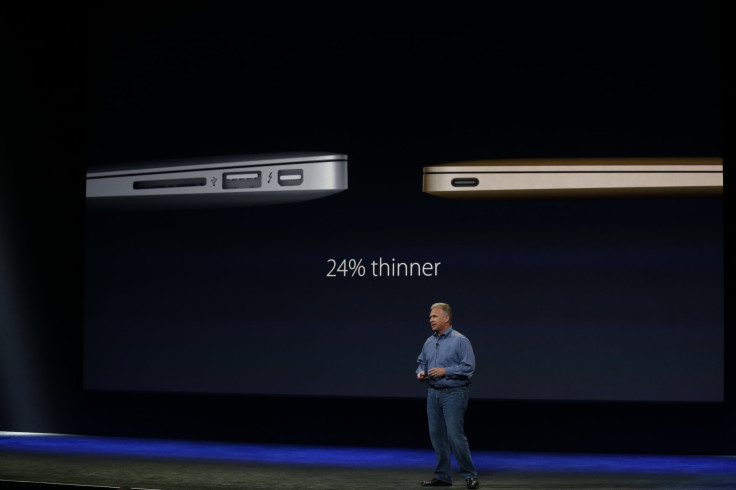What Is USB-C? The New Port In Phones, Tablets And PCs That Could Replace Lightning And Micro-USB

USB-C is an abbreviation we're hearing mentioned a lot lately in discussions of tech devices, but without much explanation on what it is or why it's needed. In short, if a gadget or PC comes with "USB-C," it means it has a new type of USB connector, one that device makers hope will replace the old rectangular plug.
The "C" stands for "type C" Universal Searial Bus, as opposed to the standard "type A" connector and the smaller "type B" versions found on devices from printers to mobiles. USB-C is meant as a replacement for both types A and B, and it's easy to see why that would be a good thing.
The benefits of USB-C are numerous. It's reversible, so it doesn't matter which way the cable is plugged in. It's thinner, clocking in at 2.5mm, compared to a standard USB plug's thickness of 4.5mm. It's also designed for both mobiles and PCs, meaning no irritating confusion between micro-USB and full-size USB.
It's also highly versatile. Apple's new 12-inch MacBook charges up through the connector, so you don't need to hunt for oddly shaped Apple chargers just to get their computer going. The connector can also support DisplayPort, so computers don't need to include a separate video out.
USB-C has also received a boost from Thunderbolt, a connector developed by Intel that offers ultra-fast speeds for professional applications. The new third version of the connector, capable of transfer rates of up to 5 gigabytes per second, uses the same plug as USB-C. That means computer makers developing systems for film editors or music composers will by default adopt USB-C in their products by building in a Thunderbolt 3 connector.
But it doesn't necessarily mean the connector will be fast or high-powered. Nokia's N1 tablet, one of the first USB-C consumer devices, uses the much slower USB 2.0 standard, which transfers data at a max speed of 60 megabytes per second. The more recent USB 3.0 standard can transfer data around 10 times faster. Chances are, most USB-C connectors will also support those USB 3.0 speeds, but it's not guaranteed.
It all sounds quite promising. And the best part is we wouldn't have to buy all new accessories just to use it. USB-C-to-USB adaptors are already hitting the market, offering the chance for older peripherals to connect up to new PCs. On the device end, cable makers are shipping USB-C to USB cables to connect up that new phone with an older PC.
In theory, USB-C could replace the Lightning connector Apple uses on its iPhone. USB-C is used on Android devices like the OnePlus 2 and Google Pixel C, so the iPhone would not be the first smartphone to use it. Considering the backlash when Apple replaced the 30-pin dock connector with Lightning on the iPhone 5, however, Apple may want to avoid another public relations scandal, even if the new connector would work with Android chargers.
It's early days, but USB-C has all the makings to become a ubiquitous future connector -- one plug, able to connect up almost any device, replacing the need for different-shaped holes and ports.
© Copyright IBTimes 2024. All rights reserved.






















